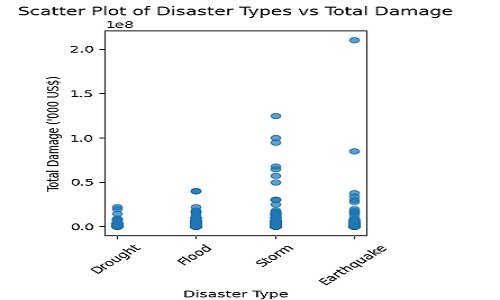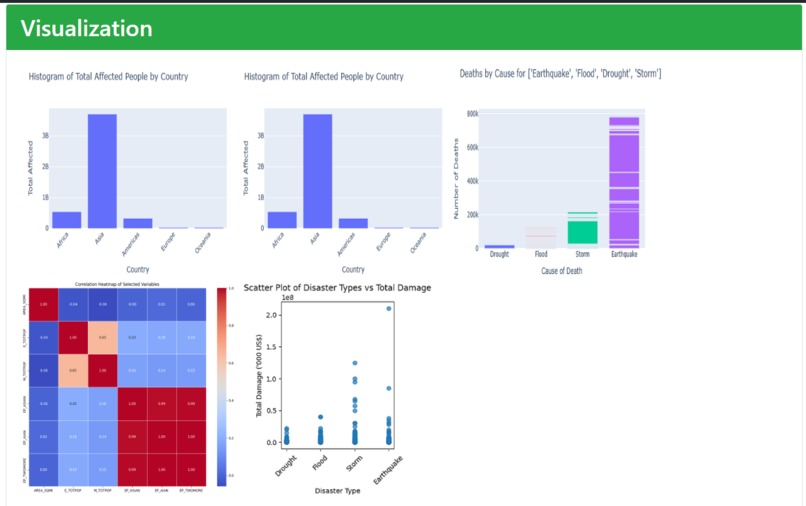Inspiration
The most compelling reason for working on disaster management is the ability to save lives and reduce human suffering during and after disasters
What it does
Our disaster management project is designed to enhance the efficiency and effectiveness of disaster preparedness, response, and recovery. By utilizing advanced technologies and data-driven approaches, our project aims to minimize the impact of disasters on lives, property, and infrastructure
How we built it
We utilized a data-driven approach to develop an effective disaster management solution, focusing on predictive analytics and real-time response. Here's how we built the project:
Data Modeling: We trained various data models, including linear regression, random forest, and KNN classifier, to predict potential disasters and assess risk levels. These models leverage historical disaster data and other relevant datasets.
Predictive Analytics: By applying machine learning algorithms, we are able to forecast the likelihood and severity of different types of disasters. This allows us to provide early warnings and support efficient resource allocation.
Web Application: We implemented our solution as a web application using Flask as the backend framework. This allowed us to create a seamless connection between our data models and the user interface.
Frontend Technologies: The frontend of the web application is built using HTML and CSS, providing a user-friendly interface for users to interact with the system. We also incorporated JavaScript for additional interactivity and responsiveness.
Integration: We integrated the data models with the web application, allowing users to access predictions and insights directly through the interface. This provides a streamlined experience for end-users, such as emergency responders and community members.
Challenges we ran into
challenges we encountered during the development of our disaster management project:
Data Cleaning: Cleaning the data was a complex task due to inconsistencies, duplicates, and errors in the datasets. We had to handle outliers and anomalies carefully to avoid skewing the model's predictions. Handling Null and Missing Values:
Missing or null values were present in the datasets, affecting the accuracy of our models. We explored various strategies such as imputation or exclusion of missing data to ensure the reliability of our predictions. Integration with the Web Framework:
Integrating the trained models with the Flask web framework required careful consideration of data transfer and processing. We needed to ensure smooth communication between the backend models and the frontend user interface.
Accomplishments that we're proud of
We take immense pride in empowering communities with our disaster management solution. By leveraging advanced data analytics and user-friendly technology, we're enabling individuals and organizations to better prepare for and respond to disasters.
What we learned
Time management Importance of Data Quality User-Centric Design
What's next for Diseaster managemnet
Advanced Predictive Analytics Real-Time Monitoring and Reporting: Community Engagement and Education
Built With
- clustering
- flask
- html
- knn
- linear
- machine-learning
- python
- regression


Log in or sign up for Devpost to join the conversation.